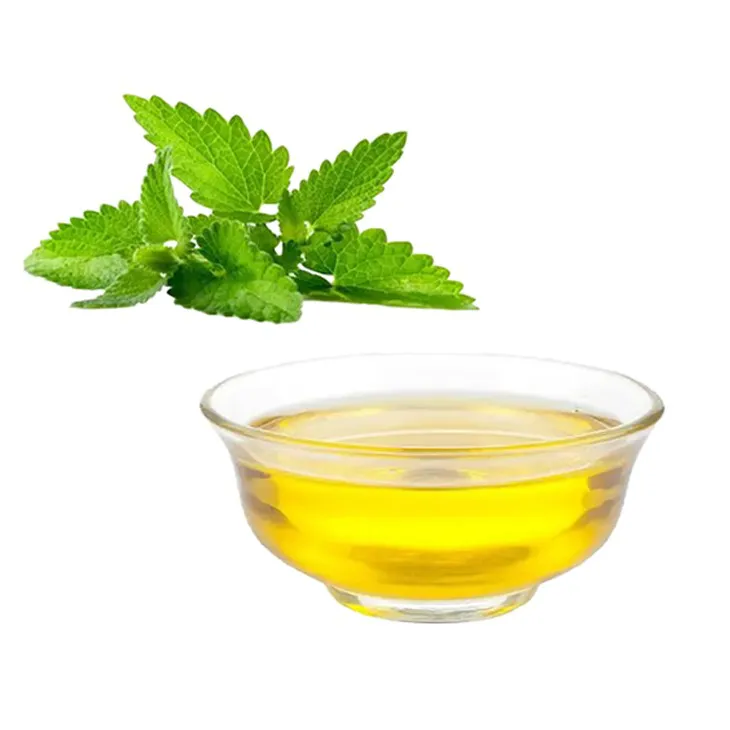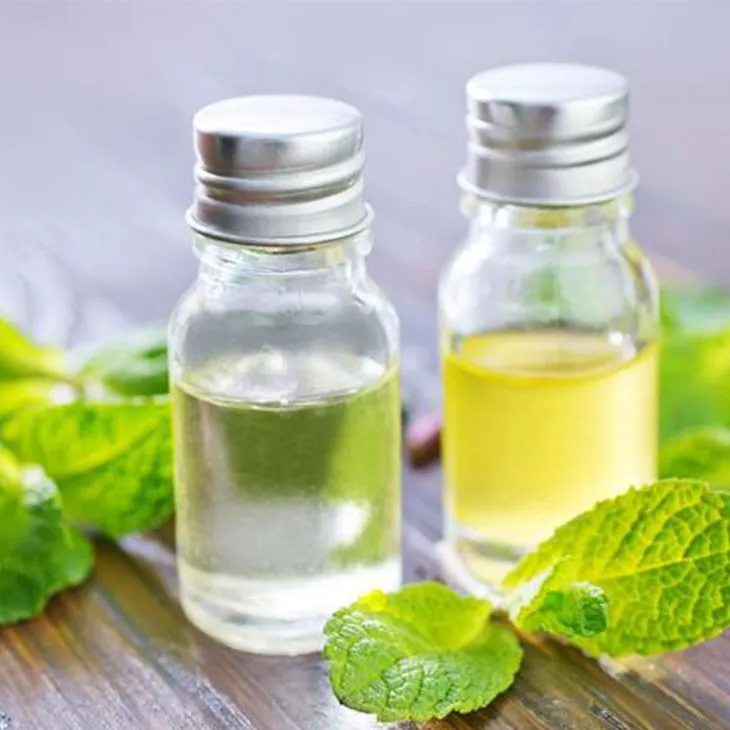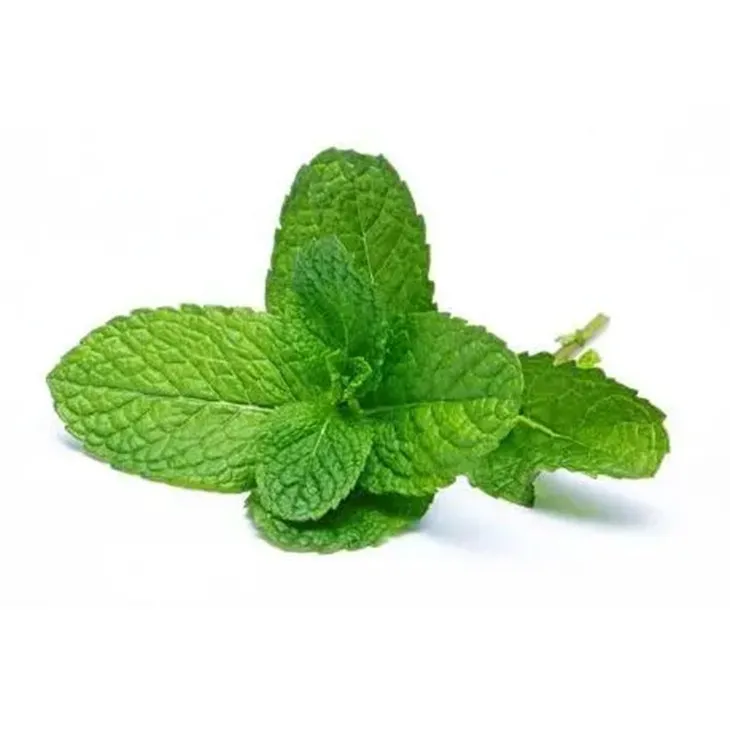- 0086-571-85302990
- sales@greenskybio.com
Peppermint Oil: Should You Use It for Skin Care?
2024-11-12

Introduction
Skincare is a vast and complex field, with countless products and ingredients vying for our attention. One such ingredient that has been generating a fair amount of buzz lately is Peppermint Oil. Peppermint Oil is known for its refreshing scent and a variety of potential benefits. But when it comes to skincare, the question remains: should you use it? In this article, we will explore the different aspects of using Peppermint Oil for skincare, considering various skin types and potential interactions.

What is Peppermint Oil?
Peppermint oil is derived from the peppermint plant, Mentha × piperita. It contains a high concentration of menthol, which gives it its characteristic cooling and refreshing properties. Menthol also has a numbing effect, which is why peppermint oil has been used in some traditional remedies for pain relief. In addition to menthol, peppermint oil contains other compounds such as menthone, limonene, and cineole, which may contribute to its overall properties.

Benefits of Peppermint Oil for Skin Care
For Oily Skin
Oily skin is often characterized by excessive sebum production, which can lead to clogged pores, acne, and a shiny complexion. Peppermint oil may offer some benefits for oily skin. Sebum control is one of the potential advantages. The cooling and astringent properties of peppermint oil can help to tighten the pores and reduce the production of sebum. This can potentially lead to a less greasy appearance and a reduced risk of acne breakouts. Additionally, the antibacterial properties of peppermint oil may help to combat the bacteria that can cause acne, further improving the condition of oily skin.
For Normal Skin
Normal skin types can also potentially benefit from peppermint oil. The refreshing nature of the oil can give the skin a healthy glow. It can also help to improve blood circulation when applied topically. Improved blood circulation can bring more nutrients and oxygen to the skin cells, promoting a healthier complexion. Moreover, the antibacterial properties can keep the skin clean and free from potential infections, maintaining the overall balance of normal skin.
Anti - Inflammatory Properties
Peppermint oil has anti - inflammatory properties, which can be beneficial for various skin conditions. Inflammation can be a factor in skin problems such as acne, rosacea, and eczema. By reducing inflammation, peppermint oil may help to soothe irritated skin, reduce redness, and promote the healing process. This makes it a potentially useful ingredient for those with sensitive or inflamed skin.

Risks and Precautions
For Dry Skin
While peppermint oil may have benefits for oily and normal skin, it can be a bit more tricky for dry skin. Dry skin lacks moisture and has a compromised skin barrier. The astringent properties of peppermint oil, which are beneficial for oily skin, can be drying for dry skin. Caution is needed when using peppermint oil on dry skin. It may cause further dryness, irritation, and even cracking if not used properly. If someone with dry skin wants to use peppermint oil, it should be diluted well and used sparingly, preferably in combination with moisturizing ingredients.
Skin Sensitivity
Many people have sensitive skin, and peppermint oil can be a potential irritant for them. The menthol content in particular can cause a stinging or burning sensation on sensitive skin. It is essential to do a patch test before using peppermint oil on a large area of the skin. To perform a patch test, apply a small amount of diluted peppermint oil to a small area of the skin, such as the inner forearm. Wait for 24 - 48 hours and check for any signs of redness, itching, or irritation. If there are no adverse reactions, it may be safer to use, but still, start with a small amount and monitor the skin's response.
Allergic Reactions
Allergic reactions to peppermint oil are also possible, although they are relatively rare. Symptoms of an allergic reaction may include rash, hives, swelling, and difficulty breathing. If any of these symptoms occur after using peppermint oil, stop using it immediately and seek medical attention. People with known allergies to mint plants or other related herbs may be at a higher risk of having an allergic reaction to peppermint oil.

How to Use Peppermint Oil for Skin Care
Dilution
Peppermint oil is very potent, and it should never be used directly on the skin in its pure form. It must be diluted with a carrier oil. Carrier oils such as jojoba oil, almond oil, or coconut oil are commonly used. A general dilution ratio is 1 - 2 drops of peppermint oil per teaspoon of carrier oil. This helps to reduce the intensity of the peppermint oil and makes it safer for the skin. Dilution also helps to spread the oil more evenly on the skin.
Application
Once diluted, peppermint oil can be applied to the skin in different ways. For facial skincare, it can be gently massaged into the skin using clean fingertips. Avoid getting the oil too close to the eyes, as it can cause irritation. For body skincare, it can be applied to areas such as the arms, legs, or back. It can also be added to bath water for a refreshing and potentially beneficial soak. However, be careful not to add too much, as the strong scent may be overpowering and could potentially cause skin irritation if the concentration is too high.
Conclusion
Peppermint oil has both potential benefits and risks when it comes to skincare. For oily and normal skin types, it may offer advantages such as sebum control, improved blood circulation, and anti - inflammatory effects. However, for dry skin and those with sensitive skin or potential allergies, caution is required. By understanding the properties of peppermint oil, diluting it properly, and doing patch tests, individuals can make more informed decisions about whether to use peppermint oil in their skincare routines. In the end, it is important to listen to your skin and adjust your skincare practices accordingly.
FAQ:
Can peppermint oil be used for all skin types?
Peppermint oil is not suitable for all skin types. For oily skin, it may have benefits such as controlling sebum production. However, for dry skin, caution is required as it can potentially cause irritation due to its strong nature.
What are the benefits of using peppermint oil for skincare on oily skin?
On oily skin, peppermint oil may help in controlling sebum production. It has a cooling effect which can also soothe the skin. Additionally, it may have antibacterial properties that can help keep the skin clean and prevent breakouts.
How should one use peppermint oil for skincare?
Peppermint oil should be diluted before use on the skin. A few drops can be added to a carrier oil such as jojoba or almond oil. A patch test should be done first on a small area of the skin to check for any adverse reactions. It can then be gently applied to the skin as needed.
Are there any side effects of using peppermint oil on the skin?
Yes, there can be side effects. It may cause skin irritation, redness, or a burning sensation, especially if used undiluted or on sensitive skin. Some people may also be allergic to peppermint oil.
Can peppermint oil help with acne - prone skin?
It may potentially help with acne - prone skin. Its antibacterial properties can fight against the bacteria that cause acne. However, due to its potential to cause irritation, it should be used carefully and if any irritation occurs, use should be discontinued.
Related literature
- Peppermint Oil in Skincare: Benefits and Risks"
- "The Role of Peppermint Oil in Different Skin Types"
- "Peppermint Oil: A Comprehensive Review for Skin Health"
- ▶ Hesperidin
- ▶ citrus bioflavonoids
- ▶ plant extract
- ▶ lycopene
- ▶ Diosmin
- ▶ Grape seed extract
- ▶ Sea buckthorn Juice Powder
- ▶ Beetroot powder
- ▶ Hops Extract
- ▶ Artichoke Extract
- ▶ Reishi mushroom extract
- ▶ Astaxanthin
- ▶ Green Tea Extract
- ▶ Curcumin Extract
- ▶ Horse Chestnut Extract
- ▶ Other Problems
- ▶ Boswellia Serrata Extract
- ▶ Resveratrol Extract
- ▶ Marigold Extract
- ▶ Grape Leaf Extract
- ▶ blog3
-
Cranberry Plants and Skin - care Products.
2024-11-12
-
Sophora Flavescens Root Extract
2024-11-12
-
Horse Chestnut Extract
2024-11-12
-
Passionflower Extract
2024-11-12
-
Black Rice Extract
2024-11-12
-
Tormentil Extract
2024-11-12
-
Longan Extract
2024-11-12
-
Black Pepper Extract
2024-11-12
-
Shikonin
2024-11-12
-
Phyllanthus Emblica Extract
2024-11-12
-
Grape Seed Extract
2024-11-12





















